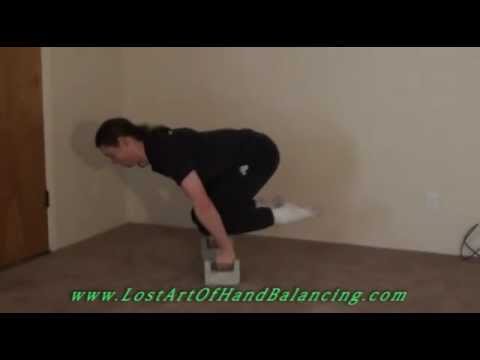I received the following question from Gary regarding moving from the tuck to advanced tuck planche.
Thanks for all your good advice and tutorials.
Can you help me as I am trying at the moment to go from tuck planche to advanced tuck planche, (sure you have had this question a few times.) I am really struggling with any progress and wondered if there was any tips you knew that may help me along.
This video here describes tips on how to this step of planche training.
The tuck planche involves straight arms and holding your body aloft.
The next step involves making it one step closer to the advanced tuck planche. I originally learned of this as one step in planche progressions from Coach Sommer in this article here. Check it out for more ideas. This includes:
1. Bringing your Shoulders Forward
Bringing your shoulders forward places additional stress on them as the leveraged position is harder to hold. As you progress in teh various planche moves you’re moving more and more forward, requiring more and more strength.
2. Straighten the Back
This one is closely tied into the next one. In fact all three of these are tied together. Straightening the back tends to make you need to raise the hips and move the shoulders forward. A back that is straight (even arched a little) and parallel to the floor is the position you’ll be holding for all future planche progressions.
3. Raise the Hips
The hips should be raised up to shoulder level. In the regular tuck planche the hips are low but this is the main point in moving to the advanced tuck planche. As you raise the hips its natural for the legs to start to untuck. When starting out make sure to keep them tucked but as you improve levering them out is the next step.
I didn’t make it completely clear in the video. Think of these three areas as places you can focus on and start the movement from, but recognize that they are all related.
The planche is a truly difficult move and will take a long time to master. With these moves be content to add a second here, or a slightly better position there. Small improvements over time lead to amazing moves.
For much more on planching as well as all forms of hand balancing consult the Hand Balancing Mastery Course.


Comments
Very good aticle Logan! As ususal! I have trained/played with the Planche for the last year on & off… but Am on planning to work on it dilligentely from the beginning of this year, wich means I’m ALREADY 6 feet deep innit! I love this training… Although I train it WITHOUT any paralletes or pushup handles/blockweight handles… simply because it’s harder & it allows me at the same time also improve whenever I do choose to train or try it out on paralletes & so on…
I’m NOW working on the Flat Tuck Planche step from Coach Sommer’s Fantastic book: Building the Gymnastic Body… Freaking LOVE that book! I’m currently working on it SLOWELY & with the ”Steady State Cycle” program… I have to say that with the Steady State Cycle (Overload, Load & Underload) Phases I feel that I make WAY MORE & BETTER Progress in the LONG run then without it, I tried last year to rush FAST through the easier steps (like the Advanced Frog Stand, Tuck Planche)… but found out I burned out fast with that kinda attitude towards the Planche training, wich, like you said, WILL take ALOT of time to TRULY Master! & As I’m planning to MASTER the TRUE planche, with the face facing forwards & Body Straight from Head to Toes like Rafael Guerrero… I know that it will take at LEAST 4x MORE time then with the Regular (face down) Planche that MOST people do…
So my question was…. what experiences did you have with the Steady State Cycle in the LONG RUN? any improvements & good results with it? how about the ”mental burnout” that Coach Sommer is talking about in his book & how to avoid it with the ”Steady State Cycle”? you noticed any differences with this type of program towards the Planche (can also be used for the Front Lever, Back Lever, Manna, STraddle Sit etc.)
I was just wondering if this ”Steady State Cycle” worked better in the LONG RUN then the other programs he mentioned in his book? & what your ideas are about it… the Ups & Downs if you will?
Thanks for your time man! & I’m looking forward to your answer!
sorry but the link to Sommers doesn’t go anywhere. could you check it out?
But how do you go from “frogstand” to tuck planche?